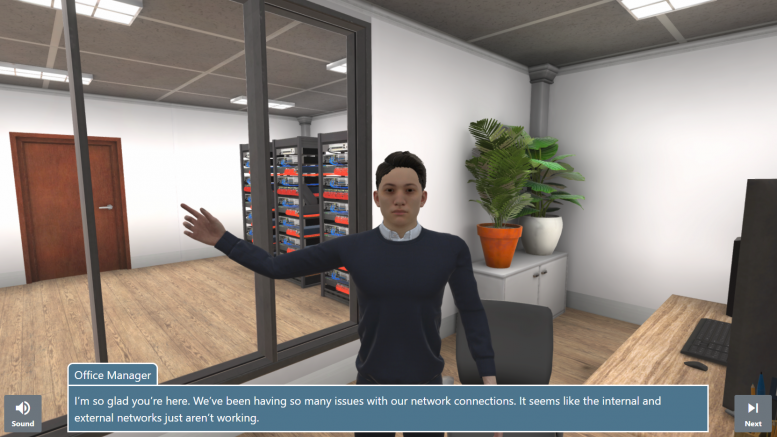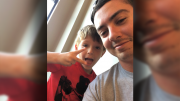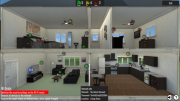By Dr. Niccole Kopit, ECPI University Dean of the College of Business

You have probably heard of or read a case study. The case study teaching method started in the early 1900s and has been a popular teaching tool of business colleges ever since (Case study method of instruction, n.d.). It is vital in business education to teach students how to address real-world business scenarios. The purpose of the case study method is to engulf students with an actual business scenario and build critical thinking that is applicable in the real word.
Essentially, case studies are a miniature version of business situations. While case studies are a go-to for business educators, the approach is stale and hasn’t been updated in more than 120 years. What’s more, the method hasn’t been adapted to updated learning modalities. The traditional case study is dependent on reading a case in a textbook and listening to a faculty member explain the nuances of the case. Some business colleges have adopted out-of-the-box case study simulations that are used only in capstone courses. This approach leaves a far-reaching cavity in the majority of the degree program.
ECPI University’s College of Business (COB) has updated the case study approach to Case Study 3.0. Case Study 3.0 has been altered into a digital format that spans the degree program, is curricular mapped, scaffolded through the simulated and digital format, and can be altered to all modalities. Finally, and most importantly, by doing so, the COB is preparing students to meet the demands of the business world and employers’ needs.
Within Case Study 3.0 we have created E-MAGINE Biomedical, a real-world business within ECPI’s internal eCity, a digital community that students enter throughout the degree program. Each course offers an opportunity to walk into a new aspect of the E-MAGINE Biomedical organization which manufactures high-end healthcare products. Students experience this digital city with a digital building, including a foyer with a front desk, a mission with a strategy, a statement of quality, an organizational chart, and even customer complaints.
The COB outlined the degree program based on the Functional Areas of business, including the global environment, which help students focus on what happens inside an organization like E-MAGINE. As students go through the courses, they can learn the foundational areas of business, such as market research, product development, strategy, manufacturing, marketing, and distribution. Each of the functional areas are dependent upon one another for an organization to run successfully and the same is true for E-MAGINE Biomedical. To do this effectively, the functional areas have E-MAGINE cases that build into a capstone experience.
Backwards Curriculum Design and AGES (Attention-Generation-Emotion-Spacing), are models that highlight key elements that are essential for effective learning (Tambini, Rimmele, et al, 2017). Using the backwards design best practice, the COB started with the capstone and wrote an international case study for our students and then built an interactive immersive experience where they can see and experience E-MAGINE through each aspect of the case. Following AGES (Attention-Generation-Emotion-Spacing), the college has ensured that each week of the capstone, and corresponding E-MAGINE case study, covers a functional area of business that is mapped to a program learning outcome and the courses preceding in the degree program.
A prime example is week two of the capstone course where students evaluate the business environment and, in the E-MAGINE case study, conduct an environmental review of the biomedical industry, including customer reviews of popular products. In a prior course, which is also mapped to the same program learning outcome, students are asked to manage customer reviews through a social CRM.

By using the same visual and digital scenes throughout the degree program, the COB is attempting to overcome the Forgetting Curve theory developed by Hermann Ebbinghaus (Schacter, 1987) which refers to the period just after learning has taken place when students start to forget what was learned. According to Ebbinghaus, students will forget between 50 and 80 percent of all new information they have learned within a few days after the learning event has occurred (Schacter, 1987).
However, students tend to recall more and forget less when the learning is spaced across time and repeated throughout their degree program (Schacter, 1987). According to the same findings, when learning is spaced and repetition used, long-term retention increased by approximately 200 percent (Schacter, 1987). By using the same digital visuals and the same company through E-MAGINE, it should not only engage students through digital mediums, but also increase student learning outcomes to prepare them for the real business world.
References:
Bridget Callaghan, Camille Gasser, Jennifer A. Silvers, Michelle VanTieghem, Tricia Choy, Kaitlin O’Sullivan, Alexa Tompary, Lila Davachi and Nim Tottenham Journal of Neuroscience 24 February 2021, 41 (8) 1738-1754; DOI: https://doi.org/10.1523/JNEUROSCI.1738-20.2020
Case study method of instruction. (n.d.). Retrieved March 31, 2021, from https://web.cortland.edu/frieda/id/IDtheories/43.html
Schacter, D. L. (1987). Implicit memory: History and current status. Journal of Experimental Psychology: Learning, Memory, and Cognition, 13(3), 501–518. https://doi.org/10.1037/0278-7393.13.3.501
Tambini, A., Rimmele, U., Phelps, E. et al. Emotional brain states carry over and enhance future memory formation. Nat Neurosci 20, 271–278 (2017). https://doi.org/10.1038/nn.4468
Breakout Box:
Students tend to recall more and forget less when the learning is spaced across time and repeated throughout their degree program. According to the same findings, when learning is spaced and repetition used, long-term retention increased by approximately 200 percent.









Be the first to comment on "Upgrading the Case Study: How eCity is creating a More Active Learning Environment"